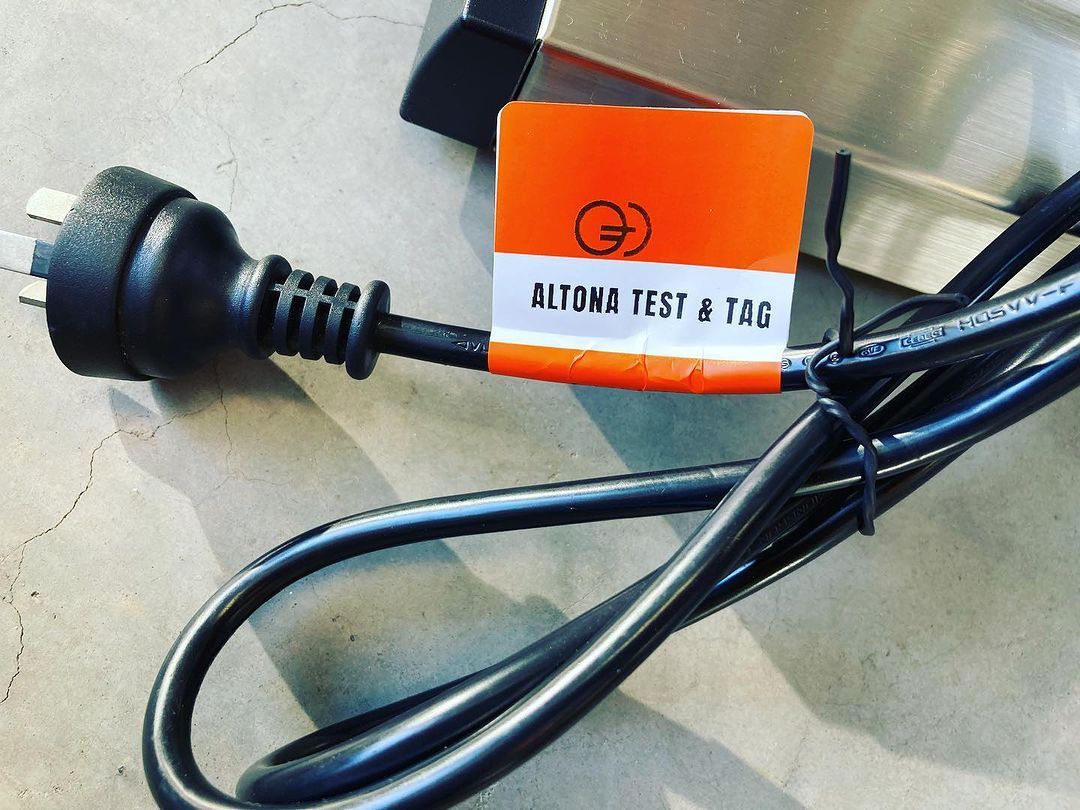ALTONA TEST & TAG
Testing and tagging is an essential process for ensuring workplace safety. It involves examining electrical equipment and appliances to ensure that they are safe to use. This process involves testing the equipment for faults or defects, and then tagging it to indicate that it has been tested and is safe to use. By doing this, employers can ensure that their employees are not at risk of harm from faulty equipment, which can cause electrical shocks, fires, and other hazards. It is important to regularly test and tag equipment to maintain a safe workplace environment and prevent any potential accidents or injuries.
The Current State in the Electrical Testing and Tagging Industry
Today, electrical testing and tagging involves a more sophisticated process that includes visual inspections, electrical testing, and tagging of equipment. This process is designed to ensure that all electrical equipment is safe for use and complies with relevant safety regulations. In recent years, electrical test and tag has evolved further with the introduction of technology such as portable appliance testers (PATs) These advancements have made testing and tagging more efficient and effective, allowing for faster and more accurate inspections of electrical equipment.
Electrical Test and Tag: Cost-Effective Ways to Ensure Compliance and Reduce Risk
By regularly testing and tagging electrical equipment, employers can avoid hefty fines for non-compliance with safety regulations and prevent potential accidents or injuries. Having a safe workplace environment can prevent downtime and loss of productivity due to equipment failures or injuries. Electrical testing and tagging may require an initial investment, but the long-term benefits can outweigh the costs.
How Electrical Testing and Tagging Can Improve Your Business Operations and Efficiency
Testing and tagging can play a crucial role in improving your business operations and efficiency. By regularly testing and tagging your electrical equipment, you can ensure that it is safe to use and compliant with the relevant regulations and Australian standards. This can not only reduce the risk of accidents and injuries but also assist in monitoring faulty equipment. Efficient testing and tagging procedures can help you keep track of your equipment inventory and maintenance schedule, making it easier to manage your assets and plan for future upgrades or replacements. Overall, investing in testing and tagging can be a cost-effective way to enhance your business operations and protect your employees and customers.
Electrical Safety with Electrical Thermal Imaging
Incorporating electrical thermal imaging into the testing and tagging process marks a significant advancement in ensuring workplace safety. Thermal imaging cameras detect heat generated by electrical components, allowing for the identification of potential issues like overheating, loose connections, or imbalances in electrical circuits before they lead to equipment failure or fire hazards. This non-invasive technique provides a clear picture of electrical systems in operation, which traditional methods might miss. By integrating thermal imaging into regular safety inspections, businesses can proactively address electrical faults, enhancing the overall effectiveness of maintenance strategies and ensuring compliance with safety standards. This not only protects equipment but also significantly reduces the risk of accidents and enhances the safety of employees.
The Importance of Regular Electrical Testing & Tagging of Appliances, Computers, Machinery and Tools
It is crucial to prioritise the regular testing and tagging of electrical appliances, computers, machinery, and tools to ensure a safe and efficient working environment. It is the Business Owner’s responsibility to have a regular maintenance schedule consisting of these items that is kept up to date. Regular testing and tagging of electrical assets in the workplace is important to ensure the safety of both people and property.
Home | Services | Why Choose Us | About | Blog | Pricing | Media & News | Services Areas | Contact
Electrician Altona | Testing & Tagging | Thermal Imaging | Minor Electrical Works | Fire Equipment | Electrical Safety Checks | Electrical Assets | Emergency & Exit Lights | Microwave Radiation Leakages | Smoke Alarms | Testing & Inspection Intervals
0432 295 152 | altonatesttag@gmail.com
REC 24850


